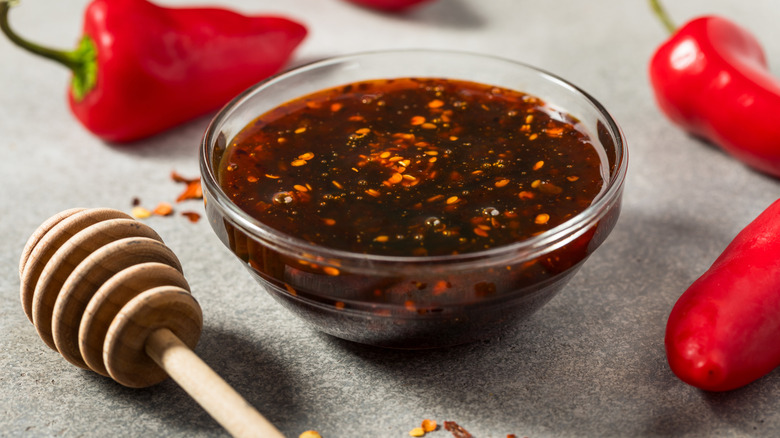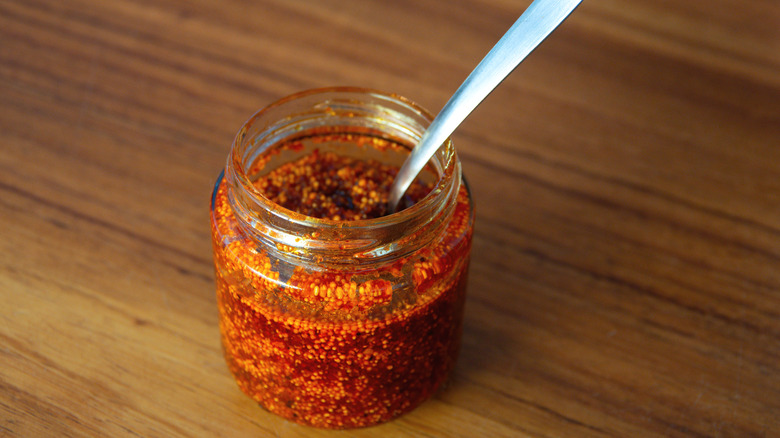What's The Difference Between Chili Crisp And Chili Crunch?
We may receive a commission on purchases made from links.
Chili crisp has been a beloved Asian condiment for generations, adding a satisfying crunch and bold heat to countless dishes. One of the earliest and most iconic store-bought versions is Lao Gan Ma Spicy Chili Crisp, which was introduced in 1984 by Tao Huabi in China. In recent years, this fiery blend has achieved mainstream popularity, inspiring a wave of new brands and variations. Even Trader Joe's has hopped on the trend with its own version, making it easier to bring the flavorful condiment into home kitchens. Fans can use it to season their fried eggs, noodle dishes, pizza, or even as a surprisingly good ice cream topping. But with so many varieties now available, you might wonder: What exactly is the difference between chili crisp and chili crunch? The truth is, not much.
The terms chili crisp and chili crunch are often used interchangeably. Each brand puts its own unique spin on the condiment, with some versions leaning more towards crunchier textures, while others focus on spiciness or a milder heat profile, so the title may not do much to even describe the jar you're considering. Each product features its proprietary blend of seasonings, making no two exactly alike. Whether the label says "crisp" or "crunch" often just comes down to branding, as does the spelling of "chili" or "chile." To add to the confusion, there's also chili oil, which is made differently and is typically thinner and less chunky than either crisp or crunch.
The chili 'crunch' controversy
The industry experienced a stir when Momofuku, known for its popular Chili Crunch, trademarked both "chile crunch" and "chili crunch." This move sparked controversy when the company started sending cease and desist letters to other businesses using those terms — even targeting small, independent operations. The backlash was swift, with many criticizing the brand for going after tiny, one-person-run companies selling their own versions of this beloved condiment. Given that chili crunch has long been a staple in many kitchens, the trademarking of such generic terms raised serious questions about brand ownership and fairness in competition. In response, founder and chef David Chang issued a public apology, stating that Momofuku would not enforce the trademark after all, and specifically cited the negative affect their actions had on the AAPI community.
This chili battle highlighted just how fiercely competitive the condiment market has become, especially as chili oil brands like Fly By Jing continue to rise in popularity alongside Momofuku. This comes as no surprise, given how versatile chili crisps and crunches can be — from elevating classic Asian dishes to adding a spicy kick to American favorites, or even pushing the limits of your spice tolerance one crunchy spoonful at a time.

